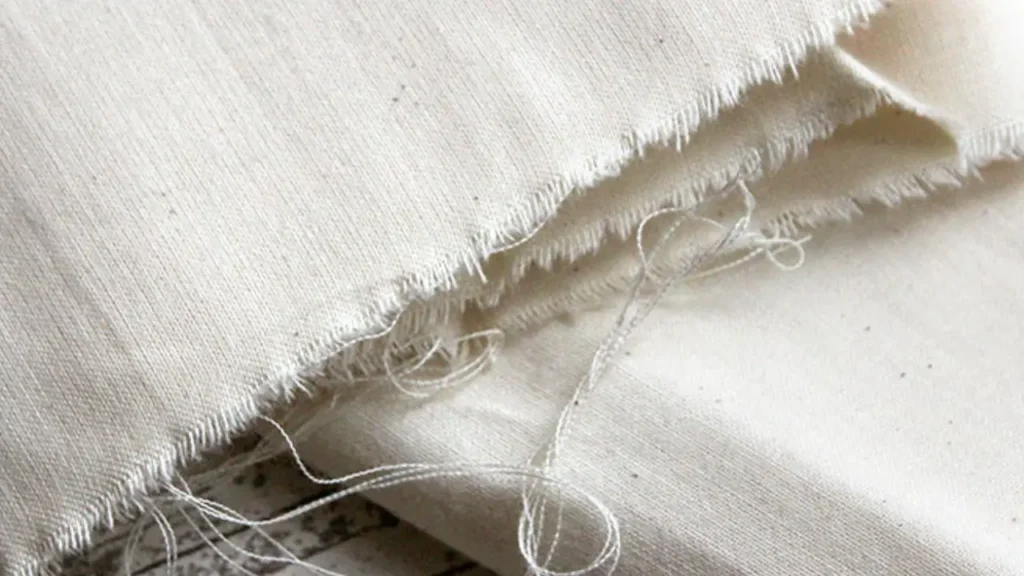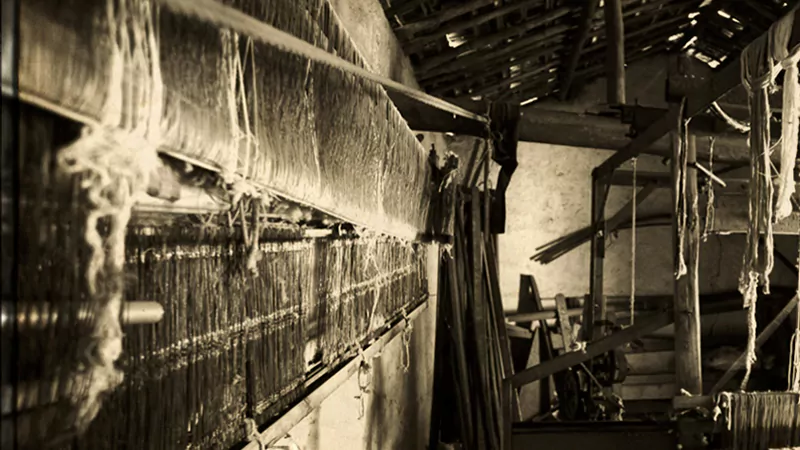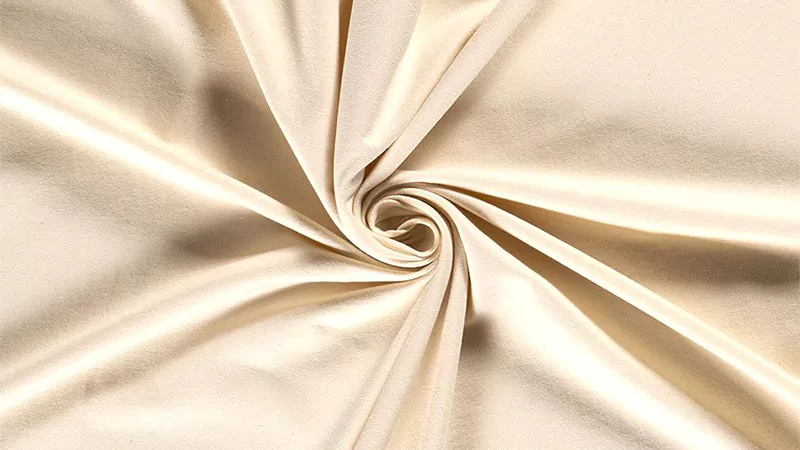Calico fabric, one of the world’s most recognizable cotton fabrics, has a rich history that spans continents and centuries. Known for its distinctive patterns, durability, and affordability, the calico has evolved from its humble beginnings in India to become a staple in the textile industry worldwide. The story of calico fabric is as much a tale of craftsmanship and trade as it is of social and cultural transformation.
What Is Calico Fabric

Calico fabric is a plain-woven textile, typically made from unbleached and unprocessed cotton. Its hallmark characteristics include a natural, off-white to creamy color and a slightly coarse texture, which can vary depending on the cotton’s quality and the specific weaving process. This fabric is known for its simplicity and versatility, making it a fundamental material in various textile applications.
The unbleached and minimally processed nature of calico contributes to its affordability, making it a budget-friendly option for numerous projects. Calico is available in a range of weights and finishes, from lightweight and airy to heavier and more robust, allowing for diverse uses. Its natural state also makes it an excellent base for dyeing, printing, and other surface design techniques, further expanding its creative potential.
History of Calico Fabric in India

The origin of calico fabric dates back thousands of years to ancient India, specifically to the region around the city of Calicut (now known as Kozhikode) on the Malabar Coast. It was from this bustling port city that the fabric derived its name, and it became famous as a major trading hub for textiles, spices, and other valuable goods. Indian artisans were already known for their remarkable skill in weaving and dyeing cotton, and calico fabric was one of their most important creations.
The earliest calico fabrics were made using raw, untreated cotton. Indian weavers spun the cotton into a lightweight fabric that was then block-printed or hand-painted with elaborate designs, typically using natural dyes. This process of hand-printing cotton became a hallmark of Indian textile production. The patterns often featured intricate florals, animals, and geometric designs, reflecting the cultural and artistic heritage of the region.
This fabric was not only used for clothing but also for household items such as bed linens, curtains, and wall hangings. Its versatility, durability, and vibrant patterns made calico a trendy fabric in India, particularly among the middle and upper classes. As Indian traders began exporting calico to other parts of Asia, the Middle East, and eventually Europe, the fabric’s fame spread far beyond its homeland.
Calico Fabric’s Journey to Europe
By the 17th century, calico fabric had made its way to Europe, primarily through trade routes established by the British and Dutch East India companies. As Indian cotton textiles, including calico, arrived in European markets, they quickly became fashionable. European consumers were captivated by the colorful, patterned fabric, which was lighter and less expensive than traditional European textiles like wool and silk.
Calico was especially popular for making dresses, household items, and decorative draperies. Its lightweight nature made it ideal for summer clothing, and its affordability allowed a broader range of people to access decorative, printed fabrics. The fabric also had the added advantage of being washable and relatively durable, making it practical for everyday use.
The rise in popularity of calico, however, created tensions within Europe’s textile industries, particularly in Britain. Wool and silk manufacturers, whose livelihoods depended on the local production of more expensive fabrics, saw Indian calico as a threat. The affordability and beauty of imported calico put pressure on these industries, and they lobbied the British government to protect domestic production from foreign competition.
The Calico Acts of 1700 and 1721

In response to these concerns, the British government passed a series of laws known as the Calico Acts. The first of these, enacted in 1700, banned the importation of printed calico fabric from India, although it allowed for the importation of plain, unprinted cotton. The intention behind this law was to allow British textile manufacturers to print and finish the fabric themselves, thus adding value to the imported goods.
However, the demand for Indian calico did not diminish, and consumers continued to seek out these exotic, colorful fabrics. In 1721, a second, more stringent Calico Act was passed, which banned not only the importation of printed calico but also the use of any calico fabric for clothing or household purposes. Violators of this law faced harsh penalties, including fines and imprisonment.
Despite these restrictions, calico remained highly sought after in Europe. Smuggling became rampant, and many consumers found ways to circumvent the ban by importing the fabric through alternative routes or by purchasing it illegally. Additionally, British manufacturers began to experiment with producing their own versions of calico, using techniques borrowed from Indian artisans.
The Industrial Revolution and the Rise of British Calico
The advent of the Industrial Revolution in the late 18th century revolutionized the textile industry, including the production of calico fabric. New mechanized spinning and weaving techniques made it possible to produce cotton fabrics on a much larger scale and at a fraction of the cost of hand-woven textiles. Factories equipped with spinning jennies and power looms replaced the traditional handlooms, drastically increasing output and reducing the need for skilled artisans.
One of the major developments during this period was the invention of roller printing, which allowed manufacturers to print intricate patterns onto calico fabric at a much faster rate than hand-printing. This innovation further drove down costs and made printed calico fabrics even more accessible to the masses.
As a result of these technological advances, British calico production flourished. Manchester, often referred to as “Cottonopolis,” became the heart of the cotton industry, producing vast quantities of calico and other cotton fabrics for both domestic and international markets. British-made calico was exported around the world, including to the American colonies, where it became a popular choice for everyday garments and household items.
Calico in Colonial America
Calico fabric played a significant role in the daily lives of colonial Americans, particularly in the 18th and early 19th centuries. In the colonies, calico was prized for its affordability and practicality. It was used to make clothing, aprons, bed linens, and even quilts. Calico quilts, in particular, became a beloved symbol of American homesteading, with their simple yet colorful designs reflecting the resourcefulness and creativity of early American settlers.
The popularity of calico in America also contributed to the development of a burgeoning textile industry in the United States. By the early 19th century, American manufacturers had begun to produce their own calico fabrics, often modeled after the British versions that were so widely used. This helped reduce dependence on imported goods and laid the foundation for the American cotton industry.
Antique Calico Fabric and Its Cultural Significance
Antique calico fabric, especially from the 1800s, holds a special place in the world of textile history. Collectors and historians value these fabrics for their craftsmanship and the stories they tell about the people who made and used them. Many of these fabrics feature elaborate floral and geometric patterns, reflecting the artistic tastes of the time.
In the world of quilting, antique calico fabrics are particularly cherished. Calico quilts from the 19th century are often considered works of art, with their intricate piecing and hand-stitching. These quilts provide valuable insights into the lives of women during this period, as quilting was one of the few creative outlets available to them.
Today, many museums and private collectors preserve antique calico fabrics as part of their textile collections. These fabrics serve as a reminder of the global trade networks that connected India, Europe, and America, as well as the cultural and economic impact of the textile industry during the 18th and 19th centuries.
Natural Calico Fabric in the Modern Era

In recent years, natural calico fabric has experienced a resurgence in popularity, particularly among environmentally conscious consumers. Unlike many modern fabrics, which are often treated with chemicals or dyed using synthetic substances, natural calico is typically unbleached and untreated, making it an eco-friendly choice. Its neutral, beige color gives it a rustic, minimalist appeal that has made it a favorite among designers and crafters who prioritize sustainability.
Natural calico is also incredibly versatile. It can be used for everything from clothing to craft projects to interior design. Many people appreciate its durability and simplicity, which make it a timeless addition to their wardrobes and homes. Whether used as a canvas for printing or left in its raw, natural state, calico continues to be a fabric that resonates with people across the world.
The Legacy of Calico Fabric
The history of calico fabric is a testament to its enduring appeal and versatility. From its ancient origins in India to its widespread use in Europe and America, the calico has played a pivotal role in shaping the global textile industry. Its journey through history is marked by innovation, cultural exchange, and economic transformation, making it one of the most significant fabrics in the world.
Today, calico remains a popular choice for consumers who value both tradition and sustainability. Whether used for clothing, quilting, or home decor, calico fabric continues to be celebrated for its rich history and timeless appeal. As we look to the future, calico’s legacy is sure to endure, reminding us of the profound impact that textiles have had on human culture and industry throughout the centuries.
Conclusion
The history of calico fabric is a rich tapestry woven with threads of global trade, cultural exchange, and industrial innovation. From its origins in Calicut, India, to its widespread adoption across Europe and beyond, calico has played a significant role in shaping the textile industry. Its journey reflects the dynamic interplay between tradition and progress, highlighting the enduring appeal of this versatile fabric.
Understanding calico’s historical context provides valuable insights into its contemporary uses. Its adaptability and affordability have ensured its continued relevance in various applications, from crafting and apparel to home decor and industrial textiles. The fabric’s evolution underscores its ability to meet diverse needs while retaining its fundamental characteristics.
For a diverse selection of high-quality wholesale calico fabric, explore the offerings at Fanda Fabrics. We provide a wide range of calico options, ensuring you find the perfect material for your projects. Contact us today to discover our collection and request a quote, and experience the timeless appeal and versatility of calico fabric.
